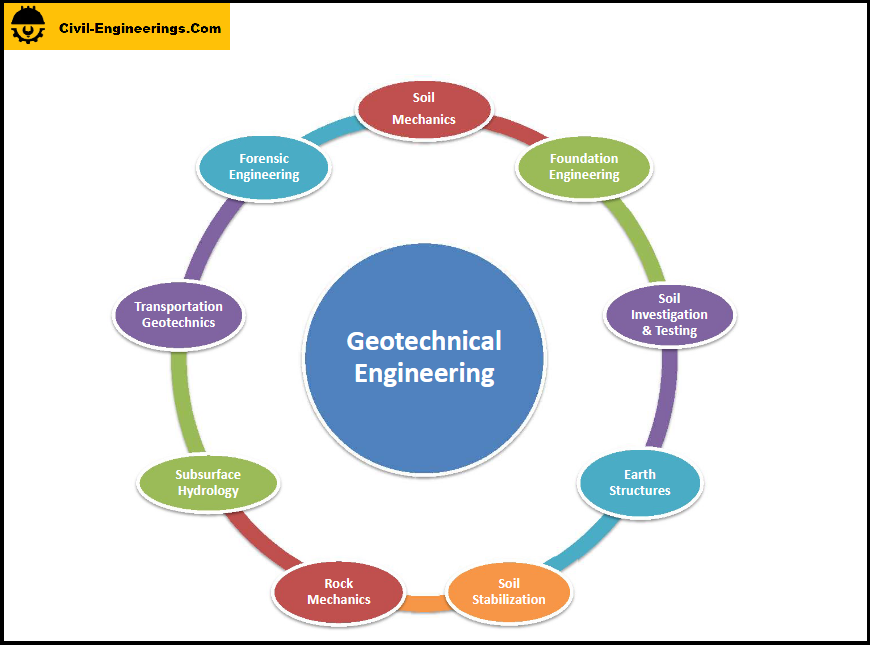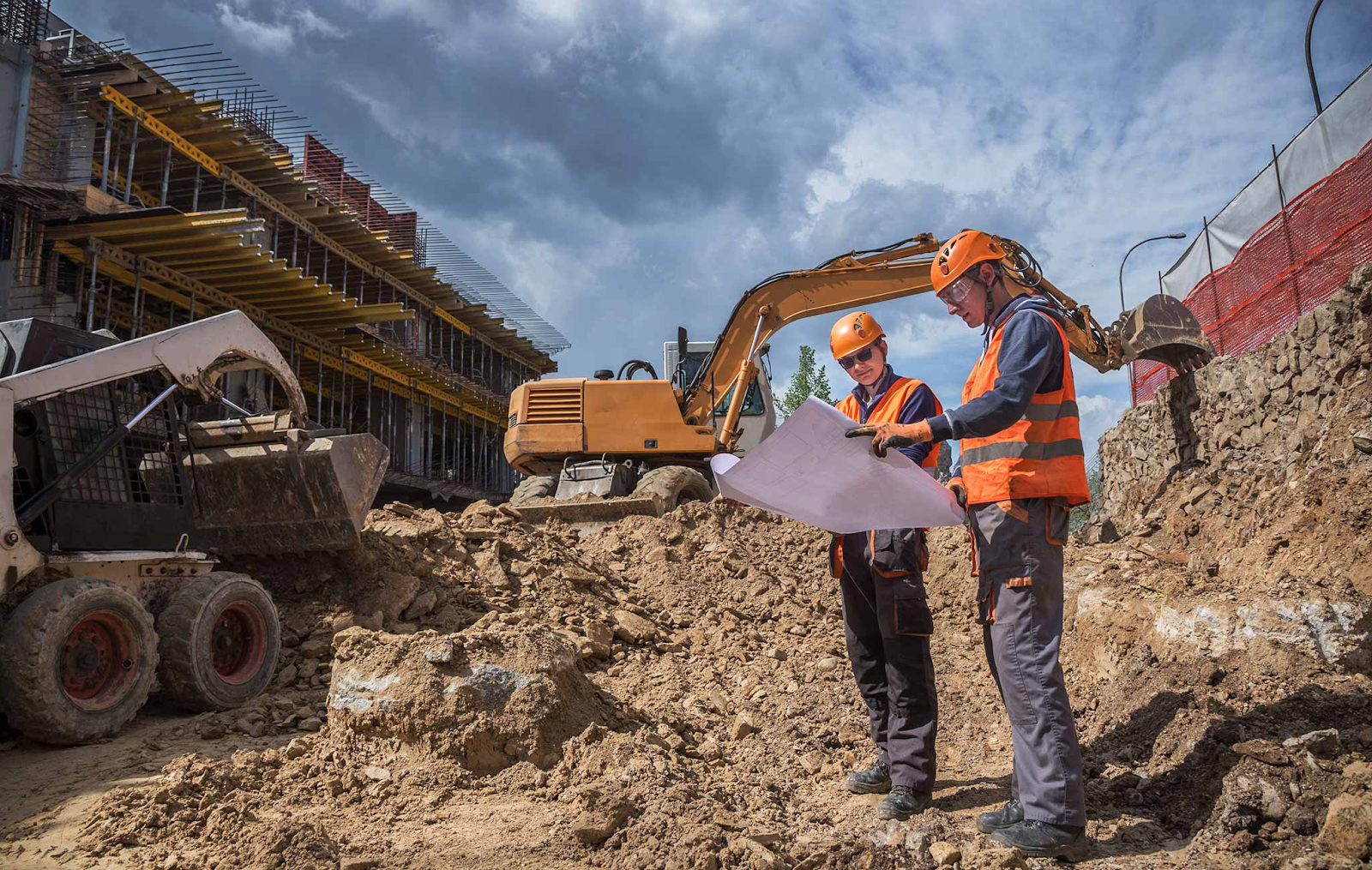The 20-Second Trick For Geotechnical Engineering For Construction Projects
The 20-Second Trick For Geotechnical Engineering For Construction Projects
Blog Article
6 Simple Techniques For Geotechnical Engineering For Construction Projects
Table of ContentsThe smart Trick of Geotechnical Engineering For Construction Projects That Nobody is Talking AboutA Biased View of Geotechnical Engineering For Construction ProjectsMore About Geotechnical Engineering For Construction ProjectsSome Ideas on Geotechnical Engineering For Construction Projects You Need To KnowThe Of Geotechnical Engineering For Construction ProjectsThe 15-Second Trick For Geotechnical Engineering For Construction Projects
The function of geotechnical engineering substantially takes care of recognizing the features of soil and rock, which might differ substantially by their thickness, wetness web content etc. These functions should be taken a look at by geotechnical engineers to forecast their activities under various circumstances. The safety and security as well as security of structures are impacted by dirt problems, making this evaluation required.A geotechnical designer will check out soil to figure out the bearing capacity of the planet and suggest proper structure types, such as shallow foundations, deep structures like piles, or specialized solutions like floating structures for soft soils. Comprehending the features and activities of soil and rock, in enhancement to exactly how they connect with constructions that have actually been erected on or within them, is just one of the primary explanations for why geotechnical engineering is crucial.
In enhancement to architectural planning and building and construction, geotechnical engineering is likewise important to the reconstruction and upkeep of pre-existing structures. Age-related deterioration or added troubles could affect a framework's stability and performance. Environmental management is achieved through geotechnical design. Expertise in air, water, and soil high quality upkeep is placed to utilize by geotechnical designers to decrease the negative impacts of tasks.
To sum up, geotechnical engineering is a crucial technique that maintains the resilience and honesty of civil infrastructure. Geotechnical engineers contribute to making structure tasks effective all over the world by comprehending the behaviour of earth materials and applying proper preparation methods.
Facts About Geotechnical Engineering For Construction Projects Uncovered
By taking a look at soil, rock, and subsurface problems, geotechnical engineers give crucial insights that aid in the design, building and construction, and maintenance of structures and framework.

Facts About Geotechnical Engineering For Construction Projects Uncovered
Lab screening: Determining the buildings of soil and rock. more A number of prominent construction jobs have efficiently used geotechnical engineering to guarantee their stability and safety.

As a leader in geotechnical design, BECC Inc. is committed to supplying innovative and reliable options that satisfy the greatest requirements of quality and safety and security. For additional information on just how BECC Inc. can support your following building and construction job, contact us today and allow us help you construct on strong ground.
William Rankine, a designer and physicist, developed a different to Coulomb's earth pressure theory. Albert Atterberg developed the clay uniformity indices that are still used today for soil classification. In 1885, Osborne Reynolds identified that shearing causes volumetric expansion of dense products and contraction of loose granular materials. Modern geotechnical engineering is claimed to have started in 1925 with the magazine of Erdbaumechanik by Karl von Terzaghi, a mechanical engineer and rock hound.
Not known Details About Geotechnical Engineering For Construction Projects
Terzaghi likewise created the framework for concepts of birthing capability of structures, and read this post here the concept for forecast of the rate of negotiation of clay layers due to debt consolidation. After that, Maurice Biot totally created the three-dimensional dirt consolidation concept, extending the one-dimensional model previously developed by Terzaghi to much more general hypotheses and introducing the set of fundamental formulas of Poroelasticity.
Geotechnical engineers examine and identify the residential or commercial properties of subsurface problems and products.
Examine This Report about Geotechnical Engineering For Construction Projects
, which makes use of a thick-walled split spoon sampler, is the most common method to collect disrupted samples.

If the user interface in between the mass and the base of a slope has a complicated geometry, slope security evaluation is difficult and mathematical remedy approaches are needed. Normally, the interface's precise geometry is unidentified, and a streamlined user interface geometry is thought. Finite slopes require three-dimensional designs to be examined, so most inclines are analyzed assuming that they are infinitely broad and can be stood for by two-dimensional models.
Rumored Buzz on Geotechnical Engineering For Construction Projects
Developing the design based on a functioning hypothesis of behavior anticipated under the most possible conditions. Selection of quantities to be observed as building earnings and computing their anticipated worths based on the functioning hypothesis under the most unfavorable conditions.
Dimension of quantities and evaluation of real problems. It is unsuitable for jobs whose layout can not be modified during building and construction.
Report this page